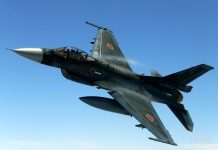Boeing’s F-15EX has been offered to India that will be based on the most advanced variant of the F-15 Eagle — the F-15QA — featuring an advanced cockpit and other new improvements for the first time.
In 2017, Qatar signed a $6.2-billion deal with Boeing for 36 new multirole F-15QAs that will be delivered in 2021. It made its maiden flight on April 13, 2020, at Lambert International Airport in St. Louis.
The test flight demonstrated maneuverability during its vertical “Viking” takeoff and by pulling nine Gs, or nine times the force of earth’s gravity in its subsequent maneuvering in the test airspace. It successfully passed the system checks, including avionics and radar.
The US Air Force has placed an order for the F-15EX fighters, which will be based on the F-15QA.
“The F-15EX is the most advanced version of the F-15 ever built, due in large part to its digital backbone,” said Lori Schneider, Boeing F-15EX program manager. “Its unmatched range, price, and best-in-class payload capacity make the F-15EX an attractive choice for the U.S. Air Force.”
After a successful partnership with India, selling its Chinook and Apache helicopters, Boeing is now keen to sell its F-15EX jets. The F-15EX jets have also been contenders for the Indian Medium Multi-Role Combat Aircraft (MMRCA) contract, competing against the French Rafales, the Russian SU-35s, the American F/A 18 Super Hornets & F-21s, and the Swedish Gripen.
The F-15QA are currently under flight testing and two of those are sent to Air Force Plant 42 at Palmdale, in California to carry out intense tests focused on key areas, including “mission systems and cockpit test effort,” Boeing Chief Test Pilot Matt “Phat” Giese told The Drive in an interview. Giese was also responsible for implementing a precise mission checklist to test the multirole aircraft’s capabilities during the fighter’s maiden flight in April.
“It’s a great effort to focus on the Qatari jets, but everything we’re doing here is going to roll into the F-15EX,” he said. The F-15 QA is based on the F-15SA that is in production for Saudi Arabia and has the same fly-by-wire flight control system introduced by the Saudi version. Fly-by-wire (FBW) systems are semi-automatic, computer-regulated aircraft flight control systems that replace mechanical flight controls with an electronic interface.
“I’ve been associated from the start of this new transformation, where we took an incremental leap from the…“legacy” F-15 to what is now a ‘digital’ F-15, and that happened when we made the first flight of the Saudi jet on February 20, 2013,” Giese told The Drive.
“I was a part of the succeeding trial out here, and that was full envelope — high and fast, low and slow — all the things we had to do to verify the envelope.”
These new FBW systems are a giant leap from the first YF-15A of the 1970s. It encompasses the new digital architecture, which is much lighter and less bulky than mechanical controls, allowing an increase in fuel efficiency and aircraft design flexibility. It also provides multiple backup systems.
“From a reliability perspective, you have two flight control computers, and each has two channels, plus quadruple inputs to each of the flight control surfaces. A quad-redundant flight control system from the flight control computers to the stabilators provides very high levels of reliability.
The mean time between failures for flight control problems rose significantly higher.” He added that the new digital fly-by-wire flight control system, in the last six years of flight testing, has suffered “zero ground aborts for flight controls.”
The Qatari variant boasts Raytheon’s APG-63(V)3 AESA radar, Lockheed Martin AAS-42 Tiger Eyes infrared search, and track system, a redesigned internal wing structure, and two additional wing hardpoints that allow it to carry up to 16 AIM-120 AMRAAM air-to-air missiles.
Reportedly, the F-15QA features the new cockpit with the “all-glass Large Area Display (LAD)” and the tests will help mature it further. “It’s a 10×19-inch display that’s fitted in both cockpits, all glass, and it features an infrared [IR] touch display,” noted Giese.
“Both are configurable per cockpit, so my Weapons Systems Officer can set the display in a different way to how I set up my display based on personal preference.” He added that during the tests on the system, the very high-resolution color image quality of the screen allows for very precise targeting, monitoring of the sensors, and mission management.
While India is still considering the F-15EX as an option for the Indian Air Force (IAF), however, Boeing’s Vice-President Prat Kumar is looking to request a marketing license from the US government to start discussions with India.
However, he was not sure whether the modern F-15EX is “in the sweet spot” for the requirement. If the IAF opts for the F-15EX, Boeing may have to carry out certain modifications accordingly, to enable the F-15EX to counter threats from China and Pakistan.




